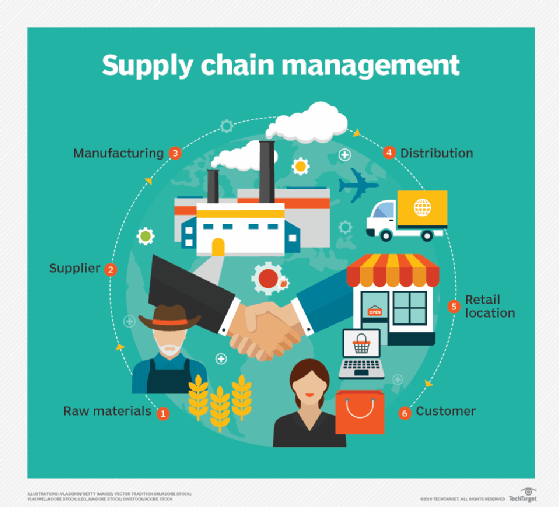What is OEM (original equipment manufacturer)?
An original equipment manufacturer (OEM) is a company that produces hardware or software that is later marketed and sold under another company's brand. In the IT and electronics industries, OEMs are foundational to global supply chains, serving as critical partners for component suppliers, software vendors, system integrators, resellers and end-device manufacturers.
While OEM originally referred to a company that manufactured the "original" components in a product, the term has evolved. Today, OEM refers to a broad network of business-to-business -- more commonly known as B2B -- relationships across both hardware and software production, including companies that build complete systems or supply parts for others to rebrand and resell.
In many cases, a company can function as both an OEM and a reseller, or even as a value-added service provider, depending on its role in the distribution chain.

OEM hardware
The use of the term OEM in the hardware segment of the IT industry has several meanings. It can describe companies such as Dell Technologies, HP Inc., Hewlett-Packard Enterprise (HPE), Lenovo and Cisco Systems. These companies source components like microprocessors, memory modules and hard drives from upstream suppliers (such as Intel, AMD and Western Digital) and integrate them into branded products such as PCs, servers, storage arrays and networking gear.
Some practical examples of OEM hardware supply chains include:
- A rugged tablet manufacturer might purchase Dell OEM components and rebrand them with military-grade casing and custom software.
- A dental imaging company might embed HPE servers into its diagnostic equipment, offering a full solution to healthcare providers.
- Lenovo OEM Solutions provides partner-ready servers that can be customized for edge computing, AI and internet-of-things (IoT) use cases.
OEM partner programs often include branding rights, lifecycle management tools and engineering support for companies looking to embed or repackage enterprise hardware.
OEM vs. ODM
While OEMs and original design manufacturers (ODMs) are both crucial players in the global manufacturing and supply chain ecosystem, their roles differ in key ways.
OEMs typically use their customers' product designs, while ODMs both design and manufacture products. OEMs are responsible for building to spec, whereas ODMs often provide end-to-end product development.
In some cases, OEMs source fully designed systems from ODMs (like Foxconn or Quanta Computer) and rebrand them. ODMs have also begun selling directly to large-scale enterprise customers, cloud providers and hyperscale data center operators, blurring traditional roles in the supply chain.
OEM software
OEM software refers to licensed software embedded in or bundled with hardware products. Common examples include the following:
- Windows operating systems (OS) installed on new laptops and desktops.
- Android OS bundled with smartphones and tablets.
- Security suites like McAfee or Norton preloaded on PCs.
- Firmware or device drivers from hardware manufacturers.
OEM software deals are typically struck between software publishers and hardware OEMs, ensuring that products ship ready-to-use for the end customer.
Some OEM software arrangements also involve embedded or white-labeled software platforms, where independent software vendors (ISVs) build on top of an OEM framework. Here are some examples:
- VMware partners sometimes embed vSphere or ESXi into their server appliances.
- Autodesk enables partners to build computer-aided design, i.e., CAD, extensions for manufacturing solutions.
- Red Hat provides OEM support for companies embedding Red Hat Enterprise Linux (RHEL) in storage or networking appliances.
VAR vs. OEM: What's the difference?
As OEM software continues to play a critical role in bundled solutions, responsibilities of OEMs often overlap with those of other players in the tech ecosystem -- most notably, value-added resellers (VARs).
An OEM builds or assembles the actual product (hardware or software), usually for wholesale or integration by other companies, while a VAR adds features or services -- like custom configurations, software installation or technical support -- before reselling the product to end customers.
However, in practice, OEMs might act as VARs by bundling their hardware with third-party software, while VARs might white-label OEM hardware, blurring the distinction between the two entities.
Trademark and licensing considerations
Because OEMs often allow partners to rebrand or modify their products, trademark and licensing guidelines are essential to maintaining brand integrity and legal compliance.
OEM partner programs often include trademark and branding guidelines, allowing resellers or system builders to use the OEM's logo, design elements or certifications under specific conditions. These programs help protect the integrity of the brand and ensure consistent end-user experiences.
Misuse of OEM branding can lead to trademark infringement. Partners are expected to adhere to strict marketing, documentation and product packaging requirements outlined by the OEM.
OEMs and AI hardware
Beyond branding and partnerships, OEMs are currently at the forefront of next-generation technologies -- especially as demand for AI-ready hardware surges across industries. Today, OEMs play a growing role in building AI-ready hardware platforms. Key trends include the following:
- NVIDIA-powered AI servers from OEM partners like Dell and Supermicro.
- Edge computing devices embedded with AI chips and IoT-ready firmware.
- OEM integration of large language model (LLM) frameworks into smart appliances, medical devices and security systems.
OEMs are deeply involved in the design and customization of AI infrastructure, providing tailored platforms to vertical markets like healthcare, manufacturing and retail.
Beyond that, OEMs remain an essential force in the modern technology ecosystem, enabling innovation across hardware, software and integrated systems. As the lines continue to blur between OEMs, ODMs, VARs and software vendors, the role of the original equipment manufacturer has expanded beyond basic component assembly to include design collaboration, branding partnerships and cutting-edge AI infrastructure development.
Whether building PCs, powering data centers or embedding intelligence into everyday devices, OEMs will continue to be foundational to how technology is created, customized and delivered.
Servers often include components from many different OEMs. These platforms offer a host of options for small and medium-sized businesses and enterprise IT buyers. However, it's important to learn the essentials before making any purchasing decisions. Check out this server architecture, products and management hardware guide.





